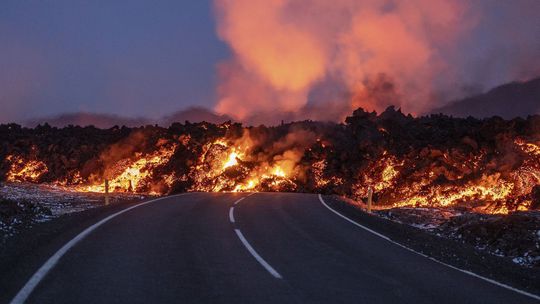On the Icelandic peninsula of Reykjanes, a fissure in the volcanic system about a kilometer long is spewing lava after Wednesday’s eruption. After the volcano erupted for the seventh time this year, the lava reached the Blue Lagoon, a geothermal swimming pool popular with tourists, completely flooding its parking lot today, the BBC reports.
Photo: SITA/AP, Marco di Marco
The volcanic eruption on the Reykjanes peninsula in Iceland began already on Wednesday, November 20, 2024.
Volcanic activity is relatively steady and does not appear to have decreased significantly overnight, according to the Icelandic website Iceland Monitor. According to the lava flow models, the lava will probably continue to flow into the country, where there is no infrastructure.
The Blue Lagoon, located about 50 kilometers southwest of the Icelandic capital of Reykjavík, is one of the country’s biggest tourist attractions. Hotel guests and homes in the area were evacuated. According to the authorities, air transport is not at risk. The Icelandic authorities had a protective embankment erected around the Blue Lagoon.
Experts say it will take one to two weeks from the end of the eruption before people and machines can enter the lava field to rebuild roads that have been swallowed by the lava.
According to seismologists, a long-dormant fault line has reawakened. Scientists have previously warned that the Reykjanes peninsula is facing repeated volcanic eruptions in the coming decades or centuries. The last major disruption to air traffic that affected the whole of Europe due to the eruption of the Eyjafjallajökull volcano dates back to 2010, when volcanic clouds spread over the whole of Europe. Over 100,000 flights were canceled around the world at that time.
The geological systems in the area of the peninsula were inactive for about 800 years, but in 2021 they woke up to life.
Source: spravy.pravda.sk




